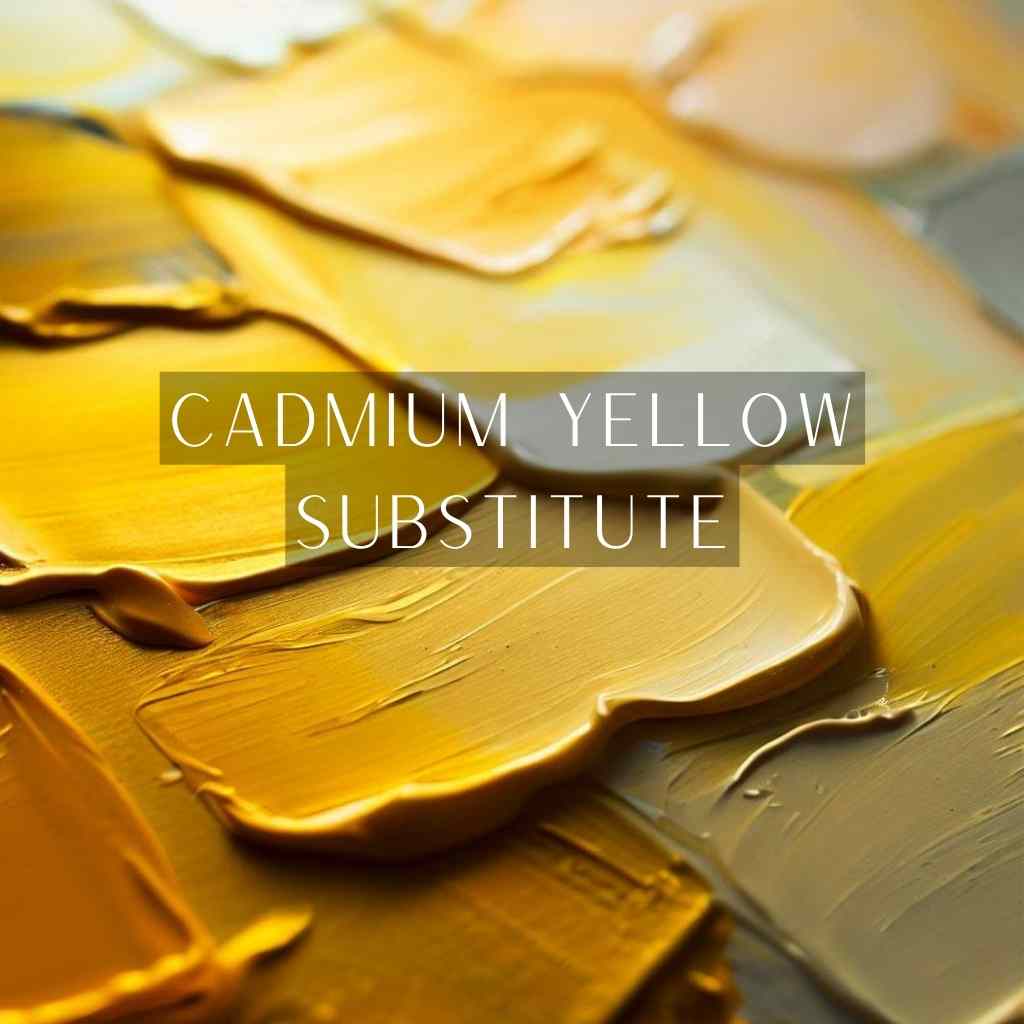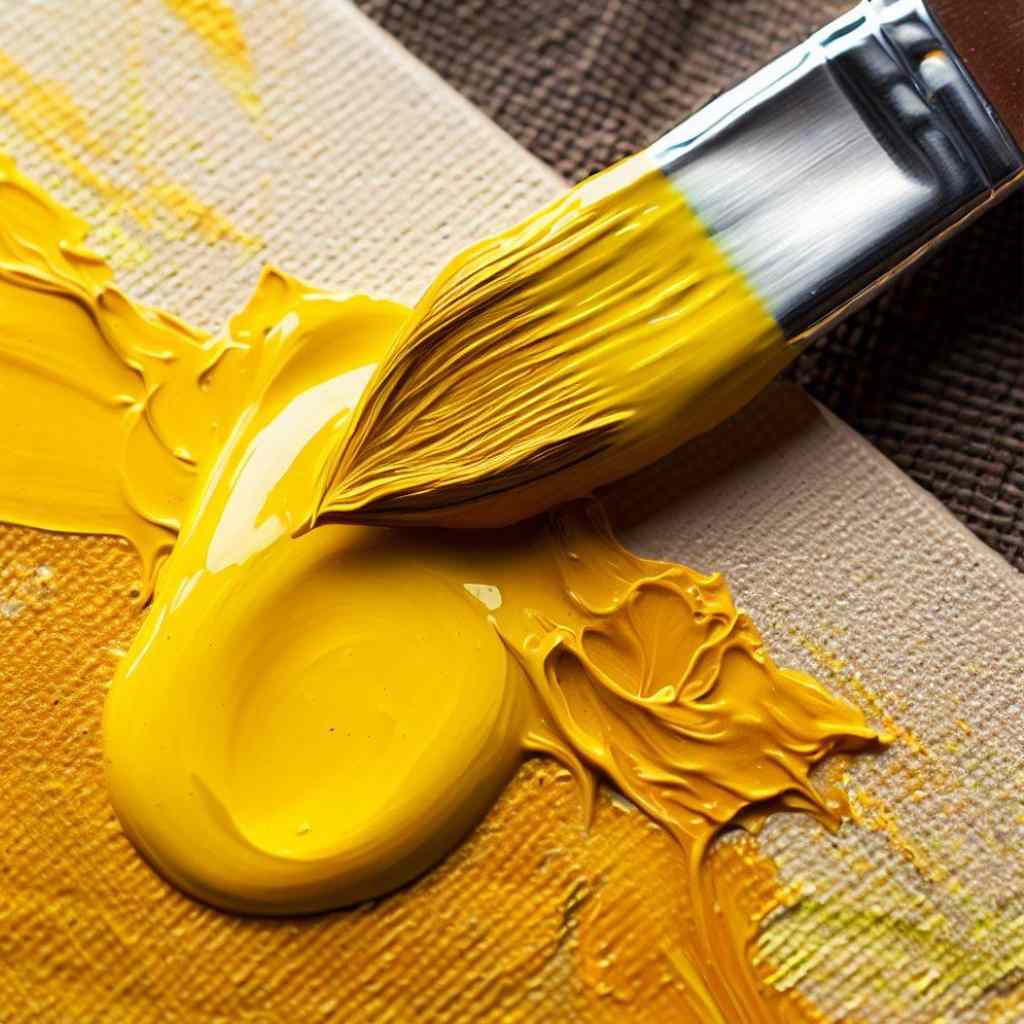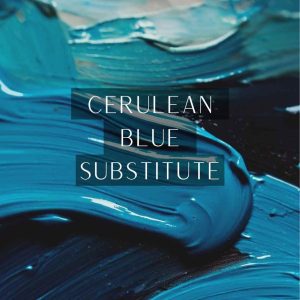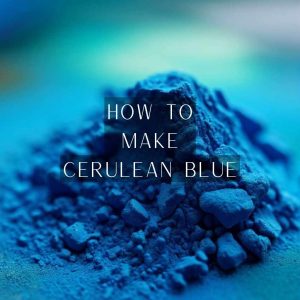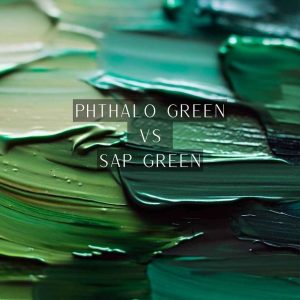In search of a cadmium yellow substitute that doesn’t compromise brilliance or environmental consciousness? You’re not alone.
As artists, we’re constantly seeking pigments that resonate with our creative vision while aligning with sustainable practices.
This blog series is your compass through this chromatic journey. We’ll unravel the intricacies of pigments, both natural and synthetic, exploring their vibrancy, lightfastness, and compatibility with various mediums.
Join us in this vivid expedition as we craft, create, and explore the world of cadmium yellow substitutes.
What is Cadmium Yellow?
Cadmium Yellow owes its name to the cadmium sulfide compound used to create its vibrant pigment. Discovered in the early 19th century, this compound revolutionized the art world with its brilliant and long-lasting coloration.
Its use quickly spread, becoming a staple in the palettes of many renowned artists.
What sets Cadmium Yellow apart is its unparalleled vibrancy. Its ability to convey intense, warm yellows with remarkable opacity makes it a favorite for artists seeking to make their colors pop.
From Impressionist masterpieces to contemporary works, Cadmium Yellow’s presence is felt in art across the ages.
Cadmium Yellow Substitute: Natural Alternatives
Natural alternatives offer a rich tapestry of options for artists seeking alternatives to Cadmium Yellow.
Every pigment carries its own unique character and narrative, providing artists with a diverse palette of possibilities for their artistic expression-
Yellow Ochre: Nature’s Golden Hue
Nature has its own palette, and Yellow Ochre is a testament to its splendor. Derived from natural iron oxide, this earthy pigment offers a warm, golden-yellow tone.
Its versatility ranges from subtle, muted shades to bold, vivid strokes. Artists drawn to the earth’s raw beauty find a kindred spirit in Yellow Ochre.
Naples Yellow: A Delicate Option
Named after the vibrant yellows found in the landscapes of Naples, Italy, this delicate pigment exudes a soft, buttery glow.
Comprising lead antimonate, it embodies a gentle radiance that lends itself beautifully to nuanced expressions. Naples Yellow evokes a sense of tranquility and warmth, making it a compelling alternative to Cadmium Yellow.
Gamboge: The Tropical Yellow
Hailing from the resin of the Garcinia tree, Gamboge is a tropical delight. Its rich, translucent yellows dance with hints of orange, creating a tropical vibrancy that is both captivating and unique.
Loved for its transparency and high saturation, Gamboge offers artists a vivid alternative to Cadmium Yellow, particularly in watercolor works.
Indian Yellow: Historical Brilliance
Steeped in history and culture, Indian Yellow carries with it the legacy of a bygone era. Traditionally sourced from the urine of cows fed on mango leaves, this pigment boasts a luminous, transparent yellow.
Its cultural significance and timeless brilliance make it a cherished alternative for artists seeking depth and tradition in their work.
Cadmium Yellow Substitute: Synthetic Alternatives
Synthetic alternatives provide a diverse array of options for artists seeking substitutes for Cadmium Yellow. Every synthetic pigment offers a unique character and quality to enhance artistic expression-
Hansa Yellow: A Bright Modern Choice
The advent of synthetic pigments ushered in a new era for artists, and Hansa Yellow stands as a shining example. Offering a range of bright, lemony yellows, this modern synthetic pigment provides consistent, reliable coloration.
Its lightfastness and versatility make it a popular choice for artists seeking a reliable Cadmium Yellow substitute.
Azo Yellow: Versatile and Accessible
Derived from azo compounds, Azo Yellow is a versatile synthetic pigment that spans a wide spectrum of yellow tones. Its accessibility, coupled with a balanced saturation and lightfastness, makes it a go-to choice for artists across various mediums.
Whether in acrylics, oils, or watercolors, Azo Yellow delivers dependable performance, offering artists a versatile and accessible alternative to Cadmium Yellow.
Diarylide Yellow: Sunlight in a Tube
For artists who seek the brilliance of sunlight captured on their canvas, Diarylide Yellow answers the call. This synthetic pigment, composed of diarylide compounds, radiates with a warm, golden hue.
Known for its exceptional lightfastness, Diarylide Yellow ensures that your creations stand the test of time, making it a valuable substitute for Cadmium Yellow.
Nickel Azo Yellow: A Balance of Warmth
Nickel Azo Yellow strikes a delicate balance between warmth and vibrancy. This synthetic pigment, derived from nickel azo compounds, offers a glowing, golden-yellow hue.
Its versatility and lightfastness make it an attractive alternative to Cadmium Yellow, especially for artists seeking a harmonious blend of warmth and brilliance.
Color Theory & Pigments Mixing for Custom Shades
Understanding color theory is the cornerstone of creating custom shades, including yellows. Primary colors, secondary colors, and their interactions form the basis of color mixing.
By mastering the color wheel and complementary relationships, artists gain the ability to craft a spectrum of yellow tones to suit their specific artistic visions.
With a palette of pigments at your disposal, the possibilities for creating custom yellows are boundless. Experimenting with various combinations of reds, blues, and other yellows allows artists to fine-tune their palette to achieve precisely the hue they envision.
This hands-on approach to color mixing empowers artists to infuse their work with a personal touch.
How to Make Cerulean Blue Substitute?
Understanding color theory, experimenting with pigment combinations, maintaining consistency, and considering practical application tips are key elements in achieving vibrant and personalized yellows in the artwork.
Gather Your Materials
To start, you’ll need the following materials-
- Primary Yellow Pigment (Azo Yellow or Hansa Yellow)
- Red Pigment (Such as Cadmium Red or Quinacridone Red)
- White Pigment (Titanium White or Zinc White)
- Palette
- Mixing Knife or Brush
- Mixing Surface
Step-by-Step Guide to Creating a Custom Cerulean Blue Replacement
- Choose Your Primary Yellow Pigment: Select a primary yellow pigment as the base for your custom mixture. Azo Yellow and Hansa Yellow are excellent choices due to their bright and vibrant hues.
- Determine Your Desired Shade: Consider the specific shade of Cadmium Yellow you’re aiming to replicate. Whether you prefer a warmer or cooler tone, this decision will guide your choice of red pigment in the next step.
- Add a Touch of Red: To mimic the warm undertones of Cadmium Yellow, introduce a small amount of red pigment.
Cadmium Red or Quinacridone Red are good options, but adjust the quantity based on your desired shade. Mix this combination thoroughly on your palette.
- Adjust with White Pigment: Depending on the opacity and brightness of your mixture, you may need to lighten it with white pigment.
Titanium White will maintain the vibrancy, while Zinc White will result in a more translucent finish. Add small amounts at a time, mixing thoroughly until you achieve the desired color.
- Test and Adjust: Before finalizing your mixture, perform a test swatch on a separate surface to ensure it matches your desired Cadmium Yellow replacement. Make any necessary adjustments by adding more of the chosen pigments or adjusting the white pigment as needed.
Experimenting with Unique Substitutes
Unique pigments open up a world of possibilities for artists seeking substitutes for Cadmium Yellow. Every pigment offers a unique and captivating quality that can enhance and elevate artistic expression.
Yellow Lake: A Transparent Option
Yellow Lake, a transparent pigment, offers a unique approach to achieving luminous yellows. Produced by dispersing organic dyes on an inert substrate, it provides a wide range of transparent, glowing yellows.
Artists appreciate its versatility in glazing techniques, allowing for the creation of layered and nuanced effects in their artworks.
Lemon Yellow: Citrus-inspired Brilliance
Drawing inspiration from the zesty citrus fruit, Lemon Yellow exudes a fresh, bright brilliance.
This synthetic pigment, often made from azo compounds, delivers a lively, lemony hue. Its high tinting strength and excellent lightfastness make it a popular choice for artists seeking a vibrant and reliable yellow pigment for their creations.
Bismuth Yellow: Heavy Metal, Light Color
Bismuth Yellow, derived from bismuth oxychloride, is a testament to the intriguing interplay between heavy metals and color. Despite its name, it offers a light, lemony hue with a subtle pearlescent quality.
Its unique characteristics make it a compelling alternative for artists looking to introduce a touch of iridescence to their work.
Aureolin: The Precious Yellow
Known as “Cobalt Yellow,” Aureolin is a synthetic pigment with a rich history. Originally made from potassium cobaltinitrite, modern versions now employ safer formulations.
Aureolin offers a warm, golden-yellow shade with excellent transparency and lightfastness. Its enduring popularity among watercolorists attests to its luminous charm and dependable performance.
Artists’ Insights and Recommendations
Whether you work with watercolors, acrylics, or oils, these tips and tricks will empower you to integrate substitute pigments seamlessly into your artistry-
Preferred Cerulean Blue Substitutes in Different Art Styles
- Watercolor Artists Speak: Watercolorists, known for their delicate layering and transparency, value pigments that allow for luminosity and depth.
For them, Gamboge stands out as a top choice. Gamboge provides a range of translucent, glowing yellows. Its unique quality makes it ideal for layering and glazing techniques, allowing watercolorists to achieve nuanced and radiant effects in their artworks.
- Acrylic Artists’ Choices: Acrylic artists, who often seek vibrant and bold coloration, find that Azo Yellow is an excellent substitute for Cadmium Yellow.
Azo Yellow, a synthetic pigment derived from azo compounds, offers a wide spectrum of yellow tones. Its high tinting strength and exceptional lightfastness make it a preferred choice for artists working in acrylics.
This vibrant pigment allows acrylic artists to achieve intense, lively hues while maintaining the longevity of their artworks.
- Oil Painters’ Recommendations: Oil painters, known for their blending and layering techniques, require pigments that offer richness and depth.
In this context, Hansa Yellow emerges as a favored substitute for Cadmium Yellow. Hansa Yellow, a modern synthetic pigment, provides a range of bright, lemony yellows. Its consistent coloration and high lightfastness make it a reliable choice for oil painters.
With Hansa Yellow, artists can achieve the luminous, warm tones characteristic of Cadmium Yellow while ensuring the longevity of their oil paintings.
Wrapping Up
Searching for the perfect cadmium yellow substitute has been a journey filled with choices and considerations. The path to finding an eco-conscious alternative that matches the vibrancy of the original pigment has been a quest for many artists.
Now, as we draw this exploration to a close, we stand at the precipice of a new artistic era. The canvas of possibilities has expanded, allowing artists to make choices that align with their values and creative vision.
As we step forward, armed with this newfound knowledge, we do so with the confidence that the world of pigments is as diverse and dynamic as our artistry

